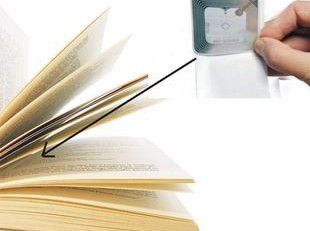What does the future look like? Many sci-fi works give answers, but no matter what type of scene, it is based on the complex scene in the Internet of Things. And RFID is the key to unlocking the web of products. RFID, also known as radio frequency identification, is really a communication technology that utilizes radio signals to distinguish specific targets and write and read related data without the need to identify mechanical or optical contact between the system plus a particular target. Simply put, the use of RFID technology allows two items to automatically sense and recognize one another.
RFID technology originated in the UK and it was found in world war 2 to identify the identity of enemy aircraft. It grew to be used in commerce inside the 1960s and commenced to produce its powerful energy commercially. In 2005, the united states Department of Defense required all military supplies to utilize RFID tags. The Usa Fda standards recommended that pharmaceutical companies use RFID to monitor drugs which might be often falsified. The first to apply RFID technology to retail is Wal-Mart. After Wal-Mart’s extensive usage of RFID tags in malls and warehouse distribution centers, the shortage of goods along with the short-term out-of-stocks of goods happen to be cut down tremendously, greatly increasing consumer satisfaction.
In addition to being employed in the retail industry, RFID tag technologies are also traditionally used in aviation, clothing, logistics, and house access control. RFID technologies are used in the aviation sell for a somewhat late period of time, however the effect is remarkable. According to reports, American Airlines used RFID tag technology to mark passenger baggage, which significantly improved transportation efficiency and saved the $22.4 billion in 2007. After consideration, other airlines did start to fully embrace RFID technology, for example Delta Air Lines and Lufthansa, show them RFID technology to assist solve problems in baggage tracking and aircraft maintenance. RFID applications inside the aviation field did start to heat.
The initial RFID was not employed for commerce, however it grew to be used for commercial activities. The expense of RFID tags was very high in the beginning, which is the main reason why RFID technology could not be popularized for some time. In 2000, the cost of each RFID tag was as high as $1. Today, this costs are high and outrageous. As a for-profit enterprise, such high-cost is unacceptable to enterprises. In 2005, due to the optimization of technology, the buying price of RFID tags dropped to about 12 cents. Now the cost of RFID has dropped below 10 cents. The decline in cost has made the commercialization of RFID a substantial-scale trend.
The outcome of RFID technology about the large-scale popularization is about its strict environmental requirements. Early RFID technology had not been mature enough to use in additional complicated situations, and there wasn’t any way to obtain interference. However, in recent times, advances in technology and technology have basically solved these complaints. The most recent generation of labels has been able to operate in an extremely harsh environment, and the opportunity to resist interference can also be strong. The most frequent example could be the RFID tag embedded in our second-generation ID card.
Helping new retail
The new retail wave is originating, and unmanned retail has changed into a new enthusiasm for everybody to catch up with.How to make it happen for unemployed retailers remains inconsistent. It comes with an unmanned shelf model that believes in the quality of the people. However, because of the limitations of its placement and the high loss rate, the unmanned shelves are not easy. Another highlight is an Amazon go mode unmanned store that relies on capital as well as technology, yet it’s limited to a price that can’t be promoted over a massive. However, the continual improvement of RFID tag technology and the continuous decrease in cost have enabled website visitors to see a new dawn. By attaching RFID tags for the corresponding sensors, it is possible to track the role of merchandise and get self-service shopping. The method of employing RFID technology as a working tool for unmanned stores was used by so many companies. As an example, the particular of unlicensed supermarkets has adopted RFID tag technology, and the cost has not yet improved much, however the shopping experience



